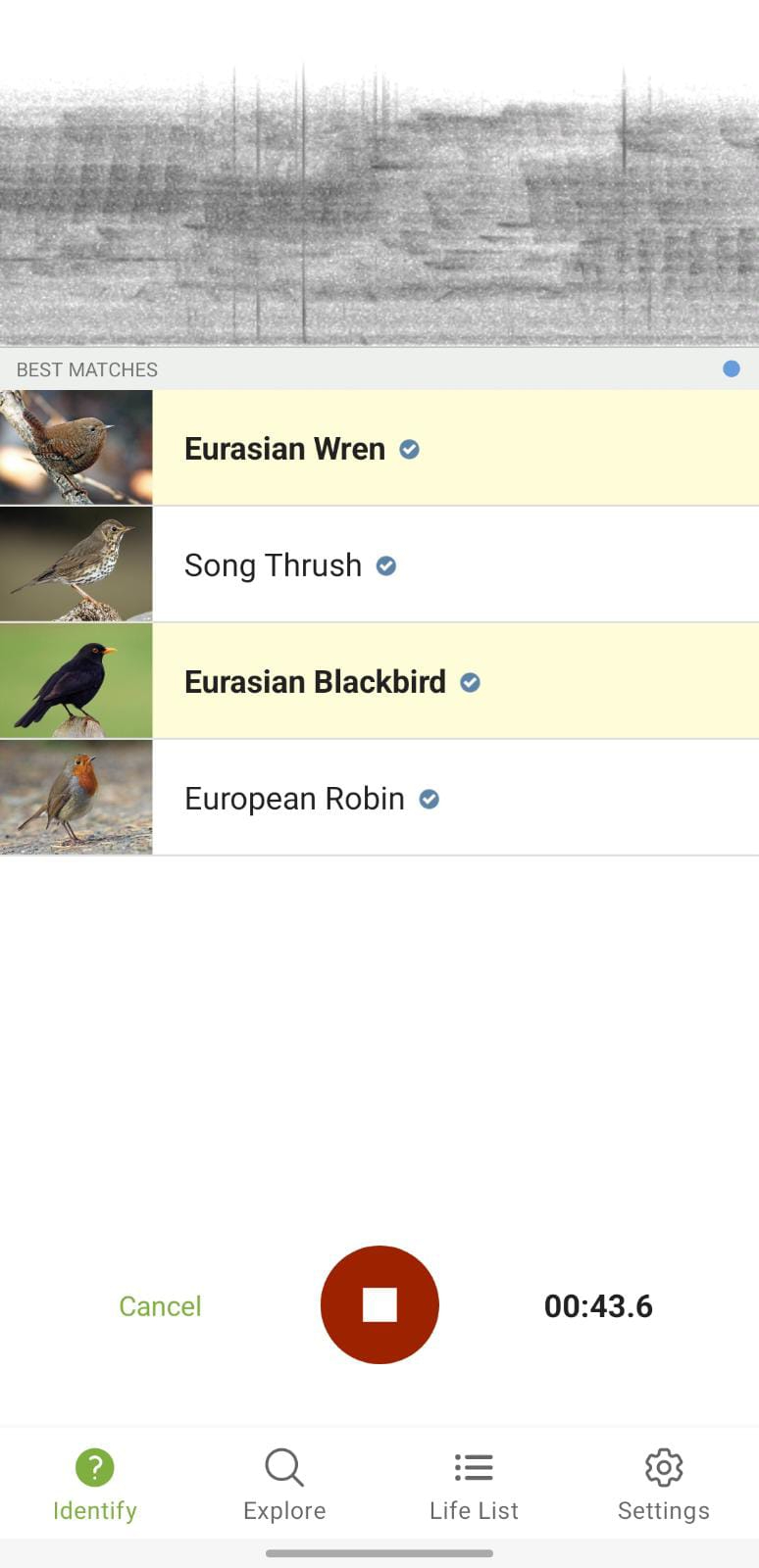Though wildlife identification apps have existed for some time now, over the past few years there has been a noticeable increase in the number of people using artificial intelligence (AI) to identify and discover what species they encounter. While many offer positive experiences, allowing for accurate identification both visually and by sound, it's also necessary to consider potential limitations and weaknesses of birding by AI. Although this column discusses Merlin Bird ID, a photographic- and sound-identification app produced by Cornell Lab of Ornithology, many of my thoughts here can be applied more generally to other, similar apps.
Merlin Bird ID has become one of the most popular bird identification apps – and as a keen sound recordist I've played around with it quite a lot. On a basic level, its strengths lie in being compatible with most smartphones, while also being easy to use and understand. In terms of sound identification, which interestingly I see it being used for far more than for visual identification, you can use it both while out in the field or at home, as recordings can quickly be imported.

The Sound ID feature of the Merlin Bird ID app is a handy tool, especially for those new to birding who are learning bird vocalisations for the first time. But how definitive is it?
What has perhaps impressed me the most about Merlin is its ability to identify and differentiate between typically trickier species, as well as the more straightforward sounds – for instance, those of Garden Warbler and Blackcap, Reed and Sedge Warblers, Goldcrest and Firecrest, Water, Rock and Meadow Pipits, and so on. Given experienced birders and beginners alike can find some of these hard to master, Merlin offers an excellent learning opportunity, especially as it also shows sonograms of species. For those that can learn shapes well, showing the sonogram makes it possible to 'see in sound'.
Things to consider
One of the primary criticisms I often see of AI birding is that it isn't 'real' birding. I can somewhat understand this scepticism, though maybe not for the same reasons. AI tools such as Merlin were never meant to replace birding, nor be the final answer. Rather than be relegated in preference to AI, human judgement still needs to be considered when identifying wildlife. Many users have been slightly too trusting of apps, taking its conclusions as gospel and not investigating the ID further. There are four main factors I'd recommend considering with sound ID on Merlin:
Location. As Merlin uses recordings uploaded to eBird to identify sounds, there are far more recordings for the US than the rest of the world. If you don't set a recording location, this may affect results, especially if a sound is similar to an American species – all the more reason to upload your recordings to eBird if possible …
Mimicry. Some species are excellent at imitating others. This can affect results – common species such as Sedge Warbler, Common Starling or European Robin, which routinely use mimicry in their songs, are more likely than a rarity.
Similar species. Though not mimicry, some birds sound just like others, with sonograms also not all that different. For example, Blackbirds can sound like Golden Orioles. Juvenile European Robin calls resemble Spotted Flycatcher's. If something seems unlikely, or you've never seen it before, there is no shame in asking someone else to confirm a heard-only recording.
Lower-pitched sounds. These often get misidentified, or lost among background sounds. Corvids, herons and other species are often not detected, or mistaken for one another.
Overall, I'd recommend birding with AI-powered apps such as Merlin, but proceed with caution! There are reasons to be careful and limitations to consider but, if combined with human judgement and experience, AI can not only be helpful for building identification skills but also learning more about what birds can be found locally.
- This column was originally published in the September 2023 issue of Birdwatch magazine.

